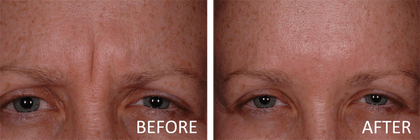The disease is characterized by a rapid increase in symptoms. In most patients, the onset of cefadroxil pills is accompanied by a flu-like syndrome. Patients complain of a nonproductive cough, respiratory distress, and increased body temperature. Nonspecific manifestations of interstitial pneumonia include the following symptoms.
Functional test results are non-specific. It is not always possible for patients suffering from interstitial pneumonia to undergo a functional examination. A characteristic sign of acute interstitial pneumonia is severe hypoxemia (decreased blood oxygen saturation), often resistant to oxygen therapy. The average level of hemoglobin oxygen saturation is 77%. Most patients require mechanical ventilation. During the examination, doctors identify the following radiological signs of interstitial pneumonia. bilateral spotted reticulonodular shadows, which extend to almost all pulmonary fields, with the exception of the costophrenic sinuses, and dense infiltrates. The lung fields may be reduced in size, and 30% of patients have a small pleural effusion.
In the later stages of the disease, the following CT signs of interstitial pneumonia are observed. Nonspecific interstitial pneumonia is not associated with smoking and develops at the age of 40-50 years. The disease begins gradually. From the onset of the first signs of the disease to buy cefadroxilonline, it takes from 1.5 to 3 years. Patients are concerned about slight shortness of breath and cough, which do not increase rapidly. In 50% of patients there is a decrease in body weight, in 35% of patients there are changes in the nail phalanges. Nonspecific interstitial pneumonia responds well to glucocorticoid therapy, and the prognosis for recovery is favorable.

Cryptogenic organizing pneumonia is characterized by the involvement in the pathological process of the final air spaces - alveoli and alveolar ducts in combination with polypoid bronchiolitis or benfrom him. Occurs in men and women aged 55 years. The onset of the disease resembles the clinical picture of influenza. Patients are worried about a productive cough with the release of clear, colorless sputum, malaise, muscle pain, and their body temperature rises. The shape of the nail phalanges does not change.
- Localized or widespread crackling rales are heard in the lungs.
- General practitioners often regard these symptoms as a manifestation of an infectious disease of the lower respiratory tract, and therefore many patients are unsuccessfully treated with antibiotics.
- Complete recovery occurs only after the administration of glucocorticoids.
- The disease is successfully treated with glucocorticoids, the prognosis is favorable.
- Desquamative interstitial pneumonia in the nature of pathomorphological changes in the lungs and clinical manifestations is close to buy duricef online bronchiolitis, but differs from it in the accumulation of macrophages in the alveoli.
- Lymphoid (lymphocytic) interstitial pneumonia is rare, usually in women over 40 years of age.
Duricef medication FAQ
Cough and shortness of breath increase gradually over three or more years. The disease is manifested by fever, chest and joint pain, and weight loss. After glucocorticoid therapy, 99% of patients recover completely; diffuse interstitial fibrosis develops in 1% of patients. Course and prognosis of interstitial pneumonia. Acute atypical pneumonia is characterized by a fulminant course, a poor prognosis, and leads to death in 70% of cases. In patients who survive acute interstitial pneumonia, the following outcomes are possible in the future.
The survival prognosis depends on the timeliness and adequacy of the therapy and the individual characteristics of the patient’s body.
Treatment of interstitial pneumonia in adults. It is very difficult to take duricef the forms of interstitial pneumonia in the practical work of a pulmonologist. Doctors at the Yusupov Hospital individually develop treatment tactics for each patient. In the case of idiopathic fibrosing alveolitis, the pulmonologist, based on computed tomography data, establishes a clinical diagnosis and immediately prescribes adequate therapy with high and medium doses of glucocorticosteroids in combination with cyclophosphamide. Throughout the entire treatment period, doctors constantly monitor possible side effects of glucocorticosteroids and cytostatic drugs.
There is currently no effective therapy for acute interstitial therapy.
Patients are prescribed high doses of glucocorticosteroids, but even with their use, mortality remains very high. Methylprednisolone has the greatest effect. After 5-10 days from the start of treatment, there is a decrease in lung damage, multiple organ failure and an improvement in patient survival. For rapidly progressing pulmonary fibrosis, intravenous combination therapy with prednisolone, cyclophosphamide and vincristine is effective. Pulmonologists also use a combination of cyclosporine, prednisolone and azathioprine and prednisolone. In patients with acute interstitial pneumonia caused by carmustine and radiation therapy, positive dynamics are observed with the use of interferon-g.
How is the safety of the participant protected?
Mandatory components of the treatment of duricef interstitial pneumonia are oxygen therapy and respiratory support. Patients undergo projective ventilation. Scientists believe that new drugs can improve the prognosis for acute interstitial pneumonia. exogenous surfactant, nitric oxide, anti-cytokine antibodies.






